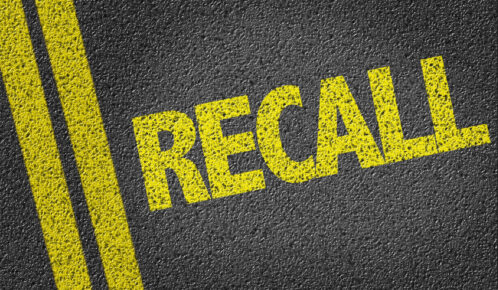When a baby is born with the umbilical cord wrapped around the neck—a condition known as a nuchal cord—the results can be tragic. In some cases, a nuchal cord resolves without incident. When doctors fail to monitor the condition properly or act quickly in emergencies, however, babies can suffer severe birth injuries or even death.
Table of Contents

If your child suffered harm due to negligent care during labor or delivery in Chicago, Ankin Law may be able to help you pursue a medical malpractice claim against the responsible doctor or hospital responsible for your baby’s injury. Call 312-600-000 now for an experienced birth injury attorney.
What Is a Nuchal Cord?
Nuchal cord is the term that the medical community uses to refer to an umbilical cord that is wrapped around a baby’s neck. Nuchal cords are grouped into two categories: Type A nuchal cord and Type B nuchal cord.
- Type A nuchal cord is one that is loosely wrapped and will most likely resolve on its own.
- A Type B nuchal cord is one that is unlikely to unwrap itself from a baby’s neck without intervention, increasing the risk of injury or death.
Although most nuchal cord cases do not result in injury to the baby, complications can lead to physical and mental impairments, permanent disabilities, and even death. In many cases, harm to the baby occurs because healthcare professionals fail to respond to signs of fetal distress or ignore obvious red flags.
According to the National Institute of Health, nuchal cord birth injuries occur in 20% to 30% of all births. In most cases, physicians can easily untangle the umbilical cord during delivery. In cases where the umbilical cord is tightly wrapped or wrapped around two or three times, it can restrict the baby’s blood flow and oxygen.
What Causes an Umbilical Cord to Wrap Around the Neck?
There’s no single reason a nuchal cord develops. Contributing factors might include:
- Excessive fetal movement
- An unusually long umbilical cord
- High levels of amniotic fluid
- Multiple fetuses (twins or more)
Obstetricians in Chicago hospitals like Mount Sinai Hospital, and birthing centers like the Birth Center of Chicago, are trained to monitor for these risk factors during prenatal care. When they fail to do so, or delay intervention, their negligence can have life-altering consequences for the child and the family.
Effects of Umbilical Cord Wrapped Around the Neck
In cases where a nuchal cord is tightly wrapped or goes unnoticed, the baby may suffer oxygen deprivation during labor. The umbilical cord is the baby’s only source of oxygen and nutrients before birth. When that source is compressed or blocked, the result can be catastrophic. Nuchal cord injury can lead to a number of serious medical conditions for the baby, including:
Long-Term Effects of Nuchal Cord Birth Injuries
- Cerebral Palsy
- Brain Damage
- Seizures
- Developmental Delays
- Intellectual Disabilities
- Stillbirth or Neonatal Death
The most immediate sign of fetal distress caused by a nuchal cord is a decrease in fetal heart rate—something that should be monitored continuously during labor. If this is missed or ignored, the baby may be deprived of oxygen for too long, resulting in permanent neurological damage.
Nuchal Cord Injury Diagnosis and Treatment
While some nuchal cords are detected during routine ultrasounds, others aren’t discovered until labor begins. Once identified, doctors must carefully monitor fetal heart rate and be prepared to act quickly.
Standard Medical Practices Include:
- Continuous fetal monitoring
- Ultrasounds during prenatal care
- Emergency C-section when fetal distress is detected
- Unwrapping or clamping the cord after the head is delivered
Doctors in Chicago labor and delivery units are expected to follow strict protocols to ensure safe outcomes. When they don’t, they may be held liable for medical negligence.
When a Nuchal Cord Birth Injury Becomes Medical Malpractice
Medical professionals are legally required to provide a standard level of care during pregnancy and delivery. When a doctor or hospital in Chicago fails to meet that standard—and injury or death occurs—Illinois law allows families to pursue financial compensation through a medical malpractice lawsuit.
Examples of Medical Negligence Involving Nuchal Cords:
- Failing to detect signs of fetal distress
- Ignoring abnormal heart rate patterns during labor
- Not ordering a C-section when urgently needed
- Inadequate prenatal screening and monitoring
- Improper delivery techniques that worsen the condition
FAQs About Nuchal Cord Birth Injuries in Chicago
Can I sue a Chicago hospital for my baby’s nuchal cord injury?
Yes. If the injury was caused by medical negligence, such as failure to monitor fetal distress or delay in performing a C-section, you may have a malpractice claim.
How common are umbilical cords around the neck during delivery?
About 1 in 3 births involve a nuchal cord, but not all lead to injury. Harm usually results when the cord is tightly wrapped and not managed properly.
How much compensation can I get for a birth injury in Illinois?
The value of your case depends on the severity of the injury, cost of care, and impact on your child’s life. Some cases result in multi-million dollar settlements or verdicts.
Is there a birth injury lawyer experienced in nuchal cord cases in Chicago?
Yes. Ankin Law is based in Chicago. Our attorneys have decades of experience in handling complex birth injury and medical malpractice cases throughout Illinois, including those involving nuchal cord injuries.
How a Chicago Birth Injury Lawyer Can Help Your Family
If your child was injured during birth due to a mismanaged nuchal cord, the legal team at Ankin Law can help you take action. A nuchal cord injury is one of many types of medical malpractice cases our attorneys handle. We understand that birth injuries often result in lifelong challenges that affect not just the child, but the entire family. A successful legal claim can help ease the financial burden and ensure your child gets the care they need. Call 312-600-0000 to get started.



